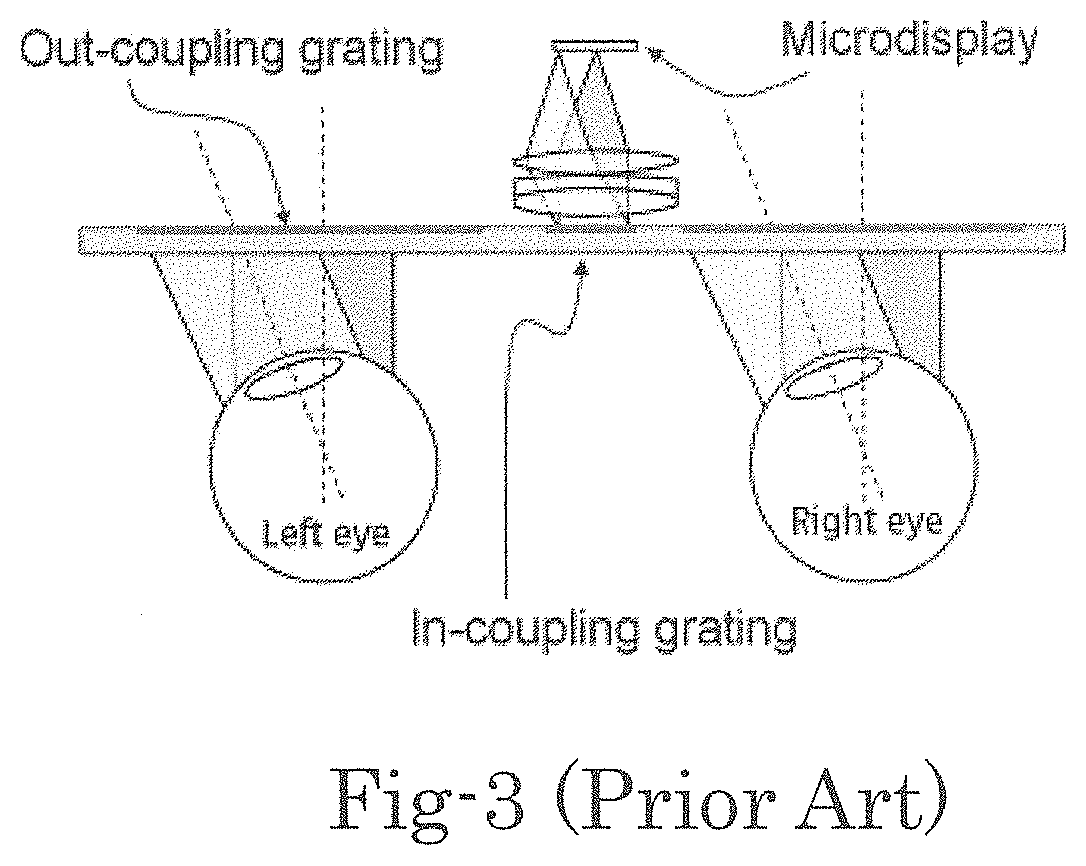Optics of wearable display devices
a technology of wearable display and optical fiber, which is applied in the field of optical fiber of wearable display devices, can solve the problems of not providing wearable display solutions that are satisfied by viewers, wearable displays often have low resolution, and the need for wearable displays is so great that it is easy to miss, minimize distortion, and increase the field of view
- Summary
- Abstract
- Description
- Claims
- Application Information
AI Technical Summary
Benefits of technology
Problems solved by technology
Method used
Image
Examples
Embodiment Construction
[0043]The detail descriptions of various embodiments below illustrate various see-through display wearable device with high resolution up to 4K (8 million pixels) and a large field of view over 60 degrees are provided in devices that have a very small form factor fitting inside the temple of eyeglass.
[0044]FIG. 7 shows an example wherein an image in air as a see-through display, i.e., a virtual image, is generated in front of the eyes of viewer. The light rays (7102) containing the images are projected from side toward an eyeglass pane (7101) and an optical element (7103) reflects the light rays toward the pupil (7105) of eye (7108) and focused onto the retina (7107). The optical element (7103) has to reflect the rays (7102) in arbitrary direction different from symmetric mirror reflection to keep the optical element thin. The optical element (7103) can be a hologram (HOE) or a diffractive optical element (DOE). Both of these can be a see-through element to generate an image (7104)....
PUM
 Login to View More
Login to View More Abstract
Description
Claims
Application Information
 Login to View More
Login to View More - R&D
- Intellectual Property
- Life Sciences
- Materials
- Tech Scout
- Unparalleled Data Quality
- Higher Quality Content
- 60% Fewer Hallucinations
Browse by: Latest US Patents, China's latest patents, Technical Efficacy Thesaurus, Application Domain, Technology Topic, Popular Technical Reports.
© 2025 PatSnap. All rights reserved.Legal|Privacy policy|Modern Slavery Act Transparency Statement|Sitemap|About US| Contact US: help@patsnap.com



